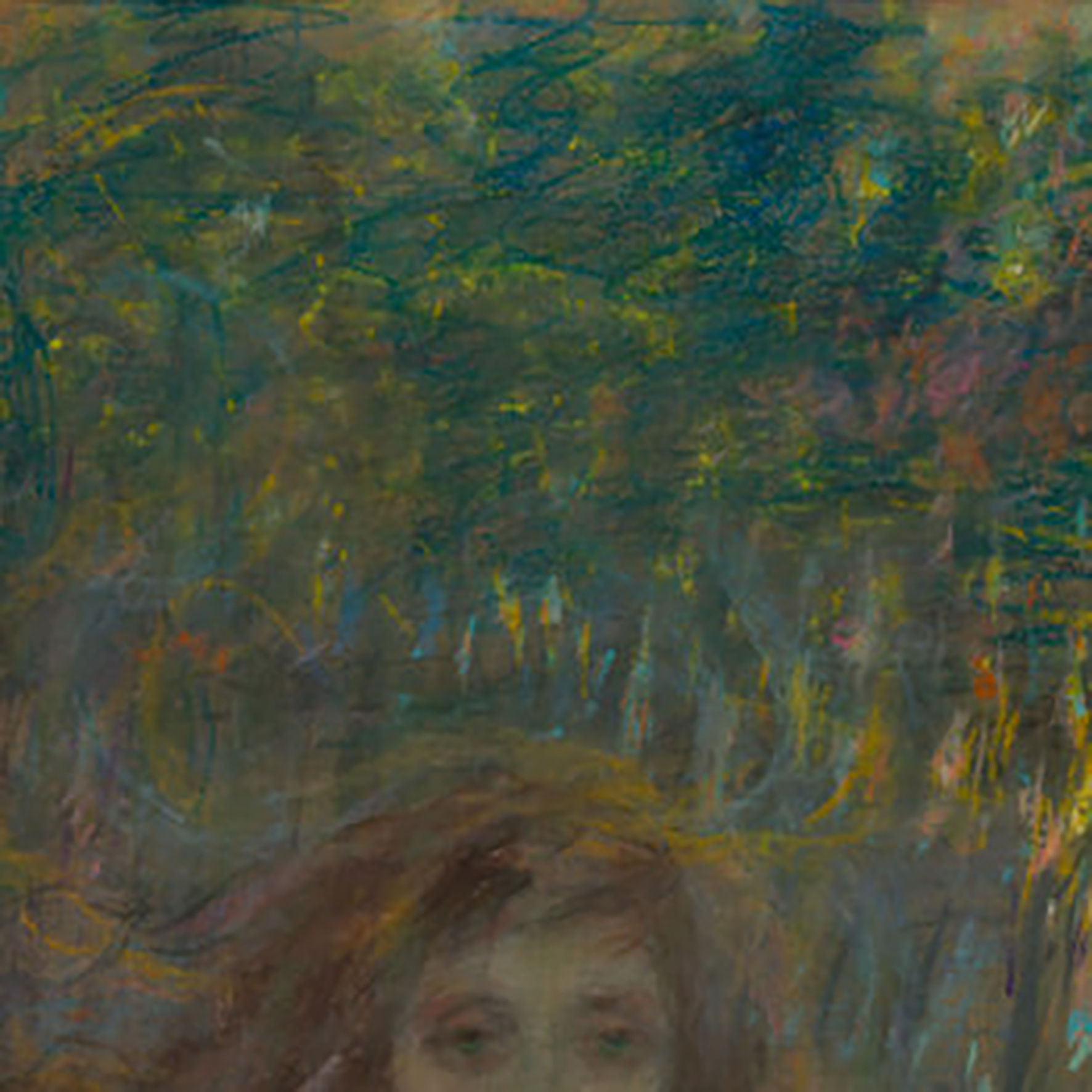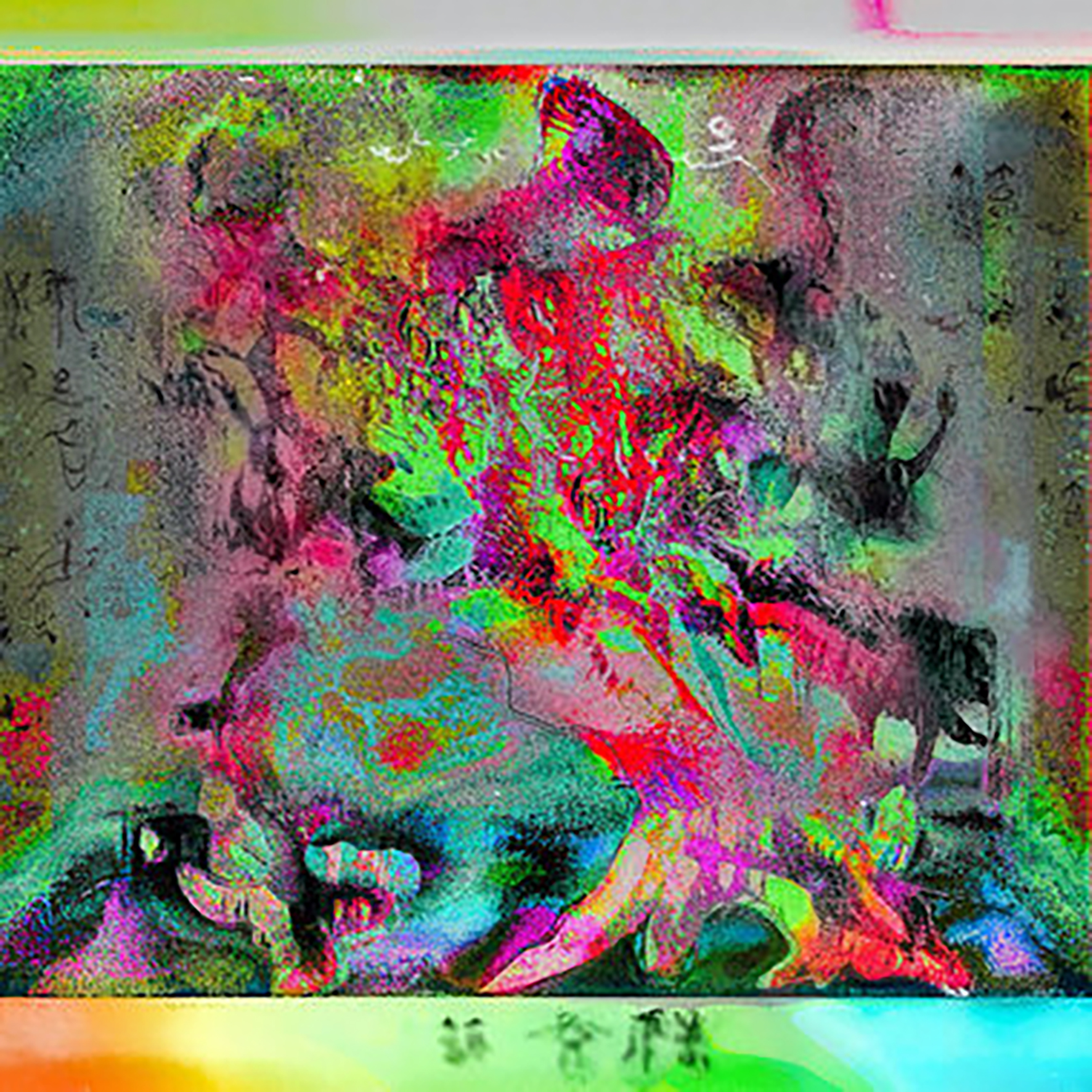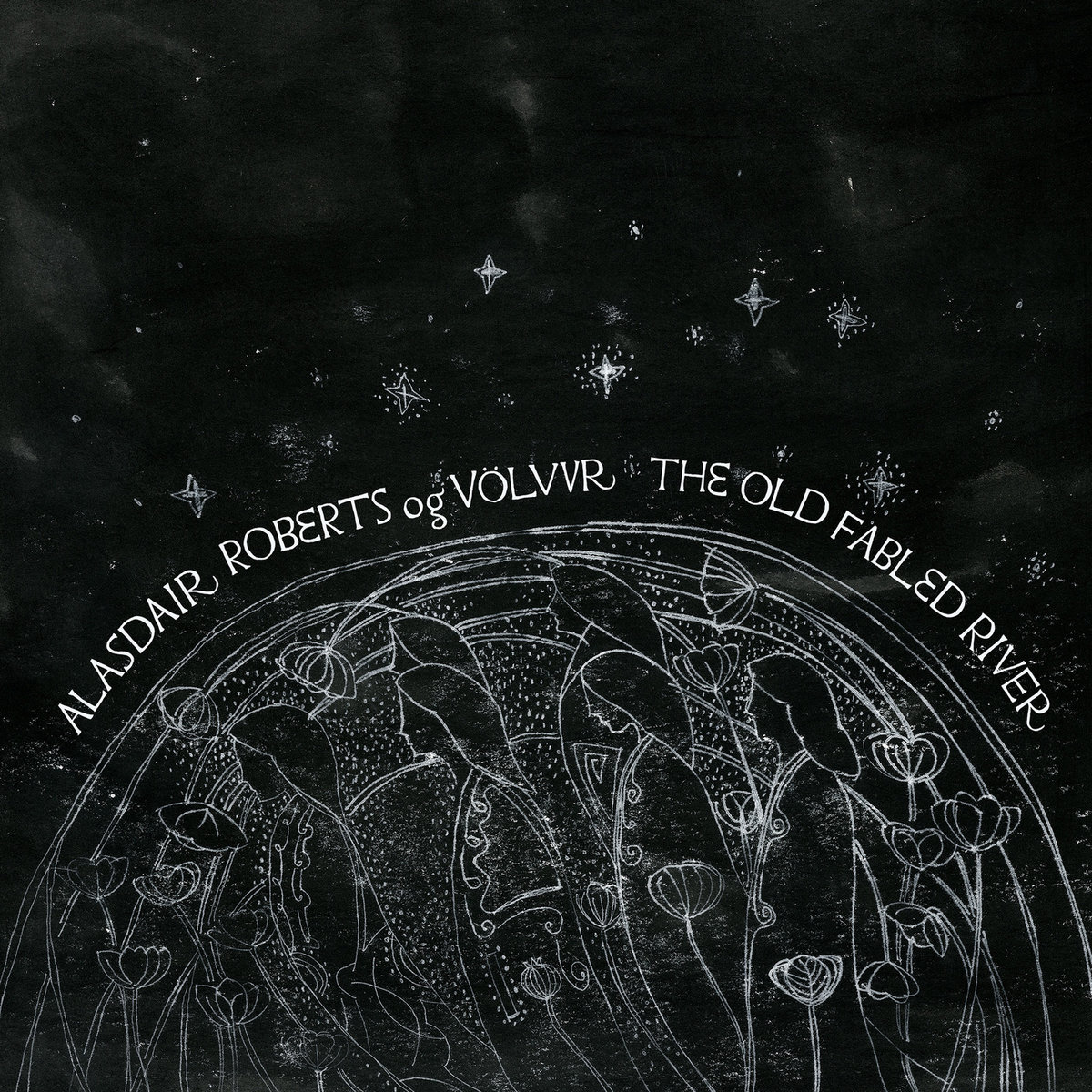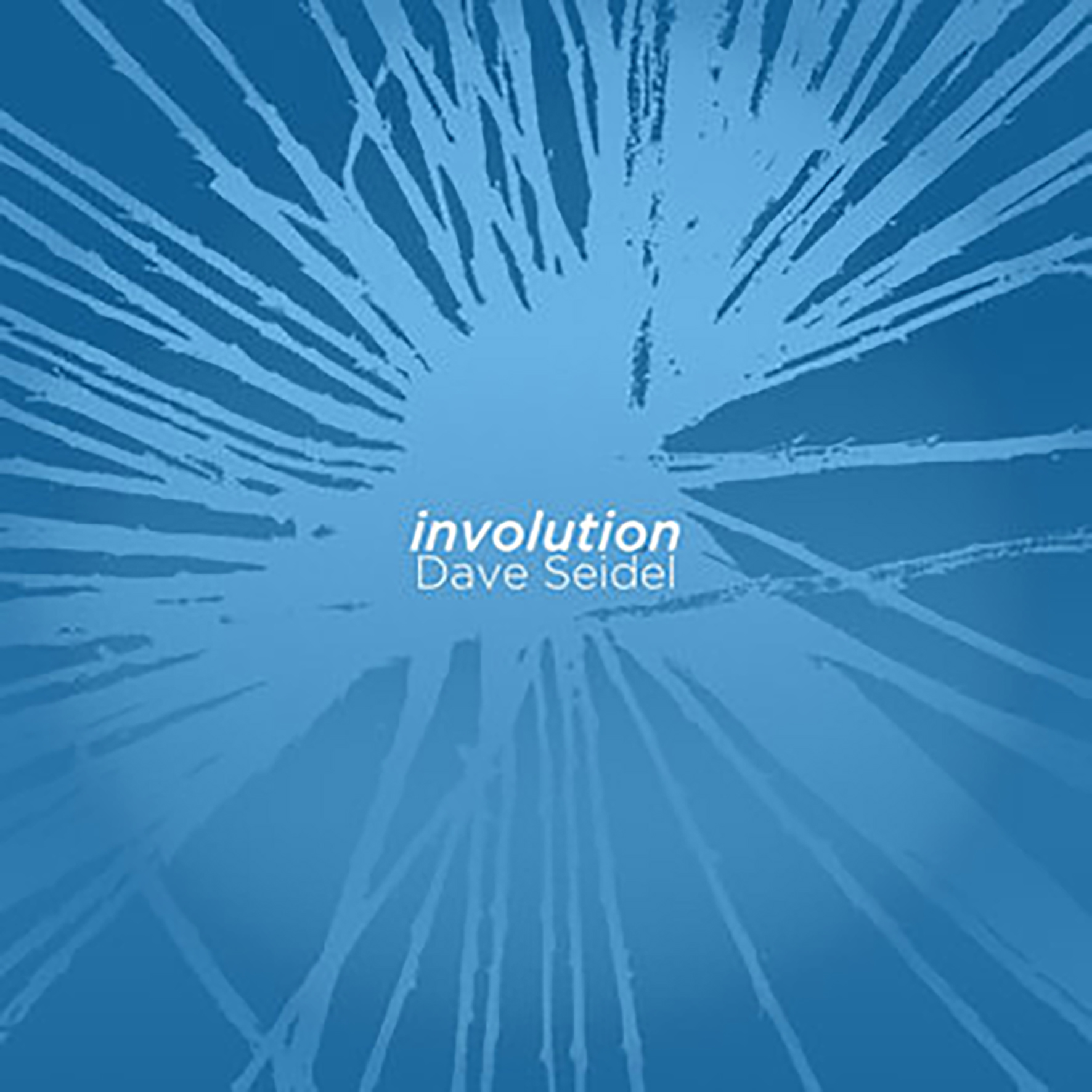 This appears to be the first major release for this long-running (if fitful) Pye Corner Audio side project, as Martin Jenkins' previous albums under this alias have all been limited CD-Rs. It certainly feels like a suitably strong statement for such an occasion. In the words of Ecstatic, Spectral Corridor "treads the line between occult soundtrack and zonked out space jam," which is a fairly apt characterization of Jenkins' latest aesthetic evolution even if it does not quite do justice to the sublime beauty of some of these pieces. According to Jenkins, this project draws its inspiration from "field recordings of walks through forests wielding finger chimes, long slow tape loops, treated guitars, elegiac organ tones, free running oscillator banks and chance operations," which mostly translates into slowly pulsing drones, subtle psychedelic touches, and a pervading air of shadowy mystery. That said, Spectral Corridor sounds considerably different from its more lush 2013 predecessor Bucolica, as Jenkins clearly took the "spectral" part of the album title very seriously, distilling his synth-centric ambient/drone to a wonderfully haunted-sounding and elegantly brooding suite of gently phantasmagoric soundscapes.
This appears to be the first major release for this long-running (if fitful) Pye Corner Audio side project, as Martin Jenkins' previous albums under this alias have all been limited CD-Rs. It certainly feels like a suitably strong statement for such an occasion. In the words of Ecstatic, Spectral Corridor "treads the line between occult soundtrack and zonked out space jam," which is a fairly apt characterization of Jenkins' latest aesthetic evolution even if it does not quite do justice to the sublime beauty of some of these pieces. According to Jenkins, this project draws its inspiration from "field recordings of walks through forests wielding finger chimes, long slow tape loops, treated guitars, elegiac organ tones, free running oscillator banks and chance operations," which mostly translates into slowly pulsing drones, subtle psychedelic touches, and a pervading air of shadowy mystery. That said, Spectral Corridor sounds considerably different from its more lush 2013 predecessor Bucolica, as Jenkins clearly took the "spectral" part of the album title very seriously, distilling his synth-centric ambient/drone to a wonderfully haunted-sounding and elegantly brooding suite of gently phantasmagoric soundscapes.
The album opens with a plinky yet insistent drum machine pattern that is quickly joined by a seesawing pulse of deep drones. Eventually, the piece ("Tone Intervals") gets fleshed out with warmer harmonies, submerged melodic fragments, and a woozily oscillating thrum. It is a perfectly executed slow burn, as Jenkins masterfully weaves together a handful of simple themes into a hypnotically swaying reverie that slowly builds in intensity and rhythmic complexity. For that one piece, Jenkins seems like he is operating on a plane of inventive minimalism that few others can touch, as the purring, quavering, and gently heaving rhythm elevates a good piece into quite a great one. The following "Spectral Corridor Part 4" is another highlight, albeit a very different and far more dramatic one. For me, it evokes a cold sky full of eerily pulsing and twinkling stars, but it also sounds like some killer early '70s space synth guy scoring a film about a macabre bit of forest folklore. Yet another gem is the tenderly languorous dreamscape "Quadratic," which unfolds like warm waves lapping the shore of an enchanted grotto. It is by far the most nakedly beautiful piece on the album and feels like a perfectly crafted loop that could extend forever, but Jenkins also performs some neat textural sleight of hand, as it steadily takes on a more hissing and quivering character as it folds. To my ears, the rest of the album does not quite hit the same heights, but it is impressively solid nonetheless, as Jenkins alternates between more minimal drone pieces and something akin to Tangerine Dream scoring a scary and intense film set in a space station or futuristic city (a description that applies to much of the four-part title suite). Fans of retro-futurist synth atmospheres will especially dig the latter, as that is one realm where Jenkins truly excels.
Samples can be found here.



 Unraveling the discography and line-up mutations of this Ho Chi Minh City-based collective turned out to be quite an unexpected challenge, as they have been releasing full-lengths and EPs since at least 2014, yet this latest album is being billed as the project's debut. I thought this might be the first release with "collective" appended to the group's name, but that is not the case either. That said, the project now appears to be a trio consisting of original members Phạm Thế Vũ and Jung Buffalo, as well as relatively recent addition Zach Schreier (who ostensibly composed much of the album). In any case, this latest release bears little stylistic resemblance to several of RCD's previous releases. Much of that is likely due to the involvement of Berlin-based producer Ziúr, who alternately punched up the songs to Subtext's exactingly high standards, "reduced them to a cinder," or "beamed them into the fifth dimension." Regardless of how this album took shape, it is quite a dazzling and deliriously kinetic achievement, resembling a freewheeling Carl Stone-esque plunderphonic tour de force of shapeshifting Vietnamese cultural fragments.
Unraveling the discography and line-up mutations of this Ho Chi Minh City-based collective turned out to be quite an unexpected challenge, as they have been releasing full-lengths and EPs since at least 2014, yet this latest album is being billed as the project's debut. I thought this might be the first release with "collective" appended to the group's name, but that is not the case either. That said, the project now appears to be a trio consisting of original members Phạm Thế Vũ and Jung Buffalo, as well as relatively recent addition Zach Schreier (who ostensibly composed much of the album). In any case, this latest release bears little stylistic resemblance to several of RCD's previous releases. Much of that is likely due to the involvement of Berlin-based producer Ziúr, who alternately punched up the songs to Subtext's exactingly high standards, "reduced them to a cinder," or "beamed them into the fifth dimension." Regardless of how this album took shape, it is quite a dazzling and deliriously kinetic achievement, resembling a freewheeling Carl Stone-esque plunderphonic tour de force of shapeshifting Vietnamese cultural fragments. Alasdair Roberts’ creative spirit and respect for tradition dovetail perfectly on this collaboration with Norwegian collective, Völvur. With traditional songs (in both artists’ languages) balanced by four new Roberts compositions, and the latter’s plaintive voice complemented by both Marthe Lea’s beautiful singing and the collective’s edgy, swinging and restrained playing, The Old Fabled River is joyous and mournful in equal measure.
Alasdair Roberts’ creative spirit and respect for tradition dovetail perfectly on this collaboration with Norwegian collective, Völvur. With traditional songs (in both artists’ languages) balanced by four new Roberts compositions, and the latter’s plaintive voice complemented by both Marthe Lea’s beautiful singing and the collective’s edgy, swinging and restrained playing, The Old Fabled River is joyous and mournful in equal measure. The underground/experimental music world is full of promising-sounding collaborations that yield underwhelming or half-baked results, but Lucy & Aaron is a wonderfully refreshing exception to that recurring phenomenon. Part of that success is likely due to the pair's long history together, as they have been fans of each other's work (and close friends) since meeting at a festival in Madeira back in 2010. Moreover, Dalt and Dilloway have actually inspired and impacted each other's work over the years, which probably went a long way in setting the stage for such a natural-sounding and symbiotic blurring together of visions. As Dalt puts it, "we crossed our signals, sometimes his affecting mine, or the other way around, we just wanted to make a fun, weird and inevitably emotive record that somehow captured so many things we love about music." Naturally, Dilloway's endearingly disorienting and creepy tape loops tend to be the foundation for much of the album, as Dalt's own backdrops tend to be quite stark and minimal. The mood of the album is quite a bit different from typical Dilloway fare, however, as Dalt's melodic influence transforms his obsessively repeating fragments of simmering psychotropic weirdness into a broken and playfully warped "pop" album like no other.
The underground/experimental music world is full of promising-sounding collaborations that yield underwhelming or half-baked results, but Lucy & Aaron is a wonderfully refreshing exception to that recurring phenomenon. Part of that success is likely due to the pair's long history together, as they have been fans of each other's work (and close friends) since meeting at a festival in Madeira back in 2010. Moreover, Dalt and Dilloway have actually inspired and impacted each other's work over the years, which probably went a long way in setting the stage for such a natural-sounding and symbiotic blurring together of visions. As Dalt puts it, "we crossed our signals, sometimes his affecting mine, or the other way around, we just wanted to make a fun, weird and inevitably emotive record that somehow captured so many things we love about music." Naturally, Dilloway's endearingly disorienting and creepy tape loops tend to be the foundation for much of the album, as Dalt's own backdrops tend to be quite stark and minimal. The mood of the album is quite a bit different from typical Dilloway fare, however, as Dalt's melodic influence transforms his obsessively repeating fragments of simmering psychotropic weirdness into a broken and playfully warped "pop" album like no other. This is Pietrusko's first solo album under his own name, but sound art enthusiasts will likely remember his previous outing as Six Microphones (2019). Elegiya is a radically different release, however, as it comfortably fits within the more ambient/drone side of Room40's aesthetic on its surface. Beneath the surface, however, lies a roiling emotional intensity that sometimes becomes downright volcanic. As befits the album's title, Pietrusko drew his inspiration from elegies, but does so in a very unconventional way, as he was most fascinated by themes of repetition and shifting context. As he himself puts it, "the creation and performance of an elegy, however, is not an experience of this original sorrow but is instead its repetition." The more interesting part, however, is that Pietrusku "attempts to capture the contradictory condition of a macro-level stasis versus a tumultuous interior." In more practical terms, that means that Elegiya transforms five piano motifs into a suite of beautifully melancholy ambient pieces that self-destruct into frayed, blown-out eruptions of emotional catharsis.
This is Pietrusko's first solo album under his own name, but sound art enthusiasts will likely remember his previous outing as Six Microphones (2019). Elegiya is a radically different release, however, as it comfortably fits within the more ambient/drone side of Room40's aesthetic on its surface. Beneath the surface, however, lies a roiling emotional intensity that sometimes becomes downright volcanic. As befits the album's title, Pietrusko drew his inspiration from elegies, but does so in a very unconventional way, as he was most fascinated by themes of repetition and shifting context. As he himself puts it, "the creation and performance of an elegy, however, is not an experience of this original sorrow but is instead its repetition." The more interesting part, however, is that Pietrusku "attempts to capture the contradictory condition of a macro-level stasis versus a tumultuous interior." In more practical terms, that means that Elegiya transforms five piano motifs into a suite of beautifully melancholy ambient pieces that self-destruct into frayed, blown-out eruptions of emotional catharsis. This is the first installment of "an ongoing album series with an undecided end point examining futility and beauty." Those are hardly new themes for Kyle Bobby Dunn, so I am not sure why they needed their own series, but any new KBD opus is fine by me. Dunn is a unique figure in the ambient drone milieu for a number of reasons, but the most significant for me is his unique gift for crafting soundscapes with a very real emotional intensity at their core. When he directly hits the mark with a composition like "Triple Axel on Cremazie" or "The Searchers," he achieves something poignant and transcendent that is damn hard to come by. I suppose one caveat with Dunn's work is that such moments are usually hidden within sprawling double-, triple-, or quadruple-LP epics, but this latest album is a more focused and concise release. More importantly, the bulk of the album is devoted to the absolutely sublime 48-minute "Fantasia on a Theme of Affection." The other two pieces are memorable as well, arguably making this the closest that Dunn has come to releasing an "all killer, no filler" masterpiece.
This is the first installment of "an ongoing album series with an undecided end point examining futility and beauty." Those are hardly new themes for Kyle Bobby Dunn, so I am not sure why they needed their own series, but any new KBD opus is fine by me. Dunn is a unique figure in the ambient drone milieu for a number of reasons, but the most significant for me is his unique gift for crafting soundscapes with a very real emotional intensity at their core. When he directly hits the mark with a composition like "Triple Axel on Cremazie" or "The Searchers," he achieves something poignant and transcendent that is damn hard to come by. I suppose one caveat with Dunn's work is that such moments are usually hidden within sprawling double-, triple-, or quadruple-LP epics, but this latest album is a more focused and concise release. More importantly, the bulk of the album is devoted to the absolutely sublime 48-minute "Fantasia on a Theme of Affection." The other two pieces are memorable as well, arguably making this the closest that Dunn has come to releasing an "all killer, no filler" masterpiece. This challenging and overwhelming double album is my first exposure to this NH-based composer, and it was quite a synapse-frying introduction to his uncompromising vision. While Seidel has only been releasing albums as a composer for the last decade or so, he was an active part of NYC's flourishing Downtown music scene in the '80s, and his work feels like it is spiritually descended from that era. Or perhaps from even before that, as he cites Alvin Lucier and La Monte Young as key influences. Unlike most artists inspired by Young, however, Seidel did not stop at dabbling in Just Intonation. Instead, he took "Young's ideal of previously unheard sounds, those that may engender new sensations and emotions in the listener" and ran with it, delving even deeper into unusual tunings until he could bring to life the sonorities that he was chasing. In practical terms, that means that the two compositions here ("Involution" and "Hexany Permutations") are longform drone works teaming with strange and buzzing harmonic collisions, which makes Phill Niblock's XI Records exactly the right home for this epic. While I suspect many people will find Seidel's single-minded and no-frills approach to conjuring unfamiliar sounds intimidatingly difficult, this album will definitely make a big impression on anyone fascinated by the physics and physicality of sound.
This challenging and overwhelming double album is my first exposure to this NH-based composer, and it was quite a synapse-frying introduction to his uncompromising vision. While Seidel has only been releasing albums as a composer for the last decade or so, he was an active part of NYC's flourishing Downtown music scene in the '80s, and his work feels like it is spiritually descended from that era. Or perhaps from even before that, as he cites Alvin Lucier and La Monte Young as key influences. Unlike most artists inspired by Young, however, Seidel did not stop at dabbling in Just Intonation. Instead, he took "Young's ideal of previously unheard sounds, those that may engender new sensations and emotions in the listener" and ran with it, delving even deeper into unusual tunings until he could bring to life the sonorities that he was chasing. In practical terms, that means that the two compositions here ("Involution" and "Hexany Permutations") are longform drone works teaming with strange and buzzing harmonic collisions, which makes Phill Niblock's XI Records exactly the right home for this epic. While I suspect many people will find Seidel's single-minded and no-frills approach to conjuring unfamiliar sounds intimidatingly difficult, this album will definitely make a big impression on anyone fascinated by the physics and physicality of sound. This debut full-length from Ugandan producer Zilla is something of a much-anticipated event, as his Boutiq studio is a crucial part of the killer underground music scene centered around Kampala's Nyege Nyege Tapes. Ekizikiza Mubwengula was additionally anticipated because it is the follow up to an absolute monster of a single that Zilla released in 2019 on Nyege Nyege's club music-themed sub-label Hakuna Kulala. While this latest release is on that same imprint, these songs are considerably wilder and weirder than the more straightforward (and relentlessly, viscerally danceable) "From the Cave." With Ekizikiza Mubwengula, Zilla shoots right past the cutting edge of contemporary dance music and lands somewhere akin to an industrial-damaged dance deconstruction of Rashad Becker's deeply alien Music for Notional Species. Predictably, I am the exact demographic for such a gleefully unhinged tour de force, and this would be the ideal soundtrack for a party occurring exclusively in my head. Yet it is quite a challenge to imagine songs this pointedly hookless and aggressively outré packing the floors of any but the craziest clubs on earth. Granted, there are a handful of more straightforward pieces here too (Zilla's production is as exacting and punchy as ever), but those will not be the ones that people most remember.
This debut full-length from Ugandan producer Zilla is something of a much-anticipated event, as his Boutiq studio is a crucial part of the killer underground music scene centered around Kampala's Nyege Nyege Tapes. Ekizikiza Mubwengula was additionally anticipated because it is the follow up to an absolute monster of a single that Zilla released in 2019 on Nyege Nyege's club music-themed sub-label Hakuna Kulala. While this latest release is on that same imprint, these songs are considerably wilder and weirder than the more straightforward (and relentlessly, viscerally danceable) "From the Cave." With Ekizikiza Mubwengula, Zilla shoots right past the cutting edge of contemporary dance music and lands somewhere akin to an industrial-damaged dance deconstruction of Rashad Becker's deeply alien Music for Notional Species. Predictably, I am the exact demographic for such a gleefully unhinged tour de force, and this would be the ideal soundtrack for a party occurring exclusively in my head. Yet it is quite a challenge to imagine songs this pointedly hookless and aggressively outré packing the floors of any but the craziest clubs on earth. Granted, there are a handful of more straightforward pieces here too (Zilla's production is as exacting and punchy as ever), but those will not be the ones that people most remember. Back in 2019, Helen Scarsdale celebrated its 50th release with a ten-cassette wooden box, On Corrosion, that immediately sold out. While I did manage to pounce on that landmark release in time to get one, I have not spent nearly enough time with it, as absorbing ten full-length albums is quite a herculean time commitment. Consequently, I was delighted to see that the label had embarked upon a campaign to reissue some (or all) of its contents and that they were starting with this bombshell from Gary Mundy's long-running Kleistwahr guise. Being a casual fan of Ramleh and the Broken Flag milieu, I thought I had a solid idea of what to expect from this project (noise, possibly involving guitars), but the striking and unique beauty of this album completely blindsided me. It is fitting that Winter debuted on a release entitled On Corrosion, as it has the feeling of an achingly gorgeous drone album that has been corroded and ravaged into something texturally complex and viscerally soulful.
Back in 2019, Helen Scarsdale celebrated its 50th release with a ten-cassette wooden box, On Corrosion, that immediately sold out. While I did manage to pounce on that landmark release in time to get one, I have not spent nearly enough time with it, as absorbing ten full-length albums is quite a herculean time commitment. Consequently, I was delighted to see that the label had embarked upon a campaign to reissue some (or all) of its contents and that they were starting with this bombshell from Gary Mundy's long-running Kleistwahr guise. Being a casual fan of Ramleh and the Broken Flag milieu, I thought I had a solid idea of what to expect from this project (noise, possibly involving guitars), but the striking and unique beauty of this album completely blindsided me. It is fitting that Winter debuted on a release entitled On Corrosion, as it has the feeling of an achingly gorgeous drone album that has been corroded and ravaged into something texturally complex and viscerally soulful. This London-based electroacoustic composer/instrument builder/DIY electronics enthusiast has been engaged in projects and activities for more than a decade now, but this latest album is the first time his singular vision crossed my path. Antiqua Graecia is the final release of a Greek-themed trilogy that began with 2018's Musique con Crète, though there is also a fourth related work that surfaced on Chocolate Monk last year (Greek Drama). The series is the fruit of an extended creative research project that initially began with a residency, but blossomed into repeat summer visits to Crete to hunt for traditional music albums, perform with local musicians, and make field recordings. While I have not fully absorbed the entire series yet, Antique Graecia feels like a significant creative leap forward from previous installments, as Tamou's earlier Greek forays resemble a Sublime Frequencies album dissolved into a fever dream: there was a clear reverence for the source material, yet Tamou's sound collages imbued traditional music with a murky, spectral character. With Antiqua Graecia, Tamou decided to go for broke, gleefully chopping and layering folk songs in a wonderfully psychotropic fantasia. I find all of the strains of Tamou's Greek series to be compelling, but this album is the one that most beautifully transcends tradition to feel like something wonderful and new.
This London-based electroacoustic composer/instrument builder/DIY electronics enthusiast has been engaged in projects and activities for more than a decade now, but this latest album is the first time his singular vision crossed my path. Antiqua Graecia is the final release of a Greek-themed trilogy that began with 2018's Musique con Crète, though there is also a fourth related work that surfaced on Chocolate Monk last year (Greek Drama). The series is the fruit of an extended creative research project that initially began with a residency, but blossomed into repeat summer visits to Crete to hunt for traditional music albums, perform with local musicians, and make field recordings. While I have not fully absorbed the entire series yet, Antique Graecia feels like a significant creative leap forward from previous installments, as Tamou's earlier Greek forays resemble a Sublime Frequencies album dissolved into a fever dream: there was a clear reverence for the source material, yet Tamou's sound collages imbued traditional music with a murky, spectral character. With Antiqua Graecia, Tamou decided to go for broke, gleefully chopping and layering folk songs in a wonderfully psychotropic fantasia. I find all of the strains of Tamou's Greek series to be compelling, but this album is the one that most beautifully transcends tradition to feel like something wonderful and new.
